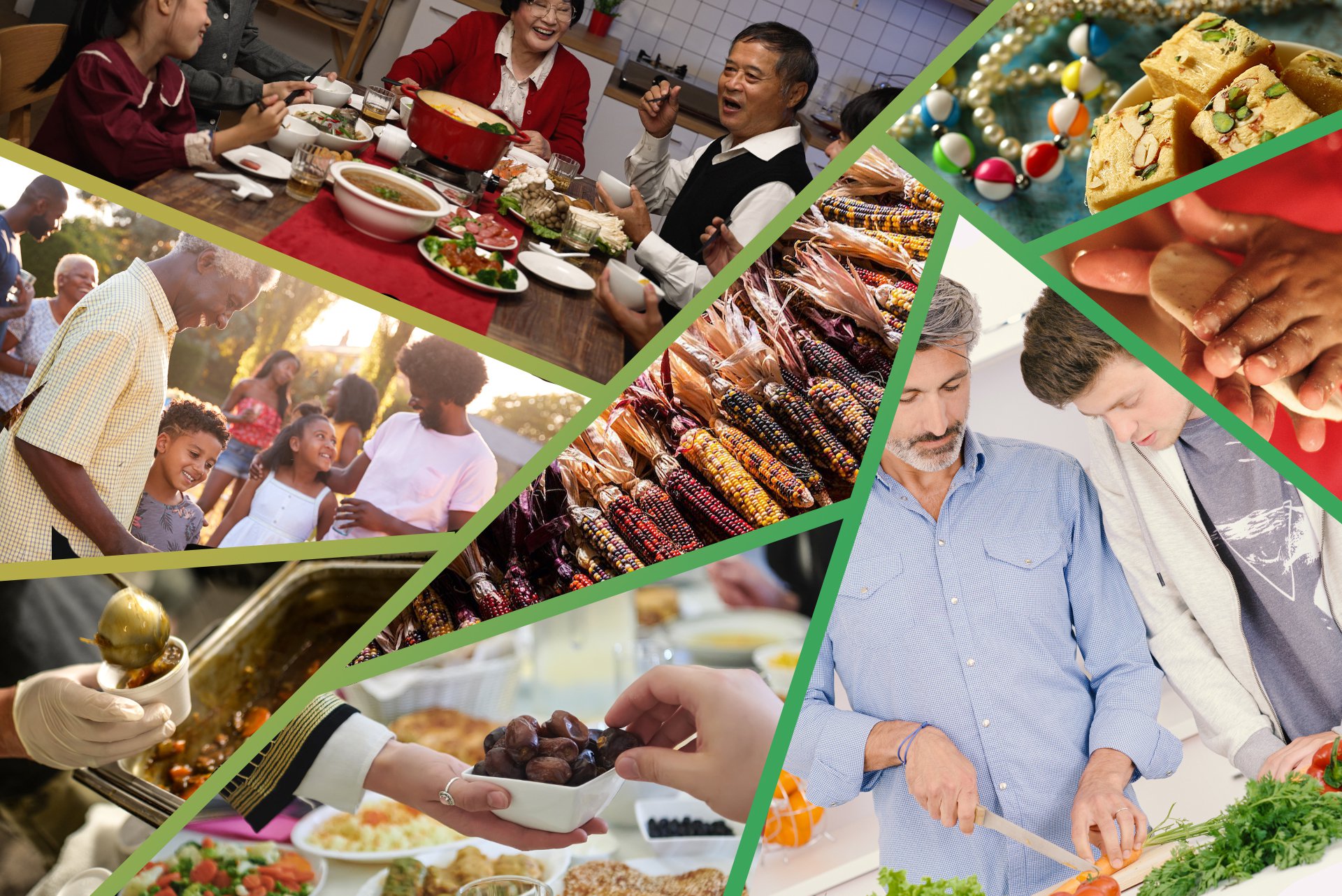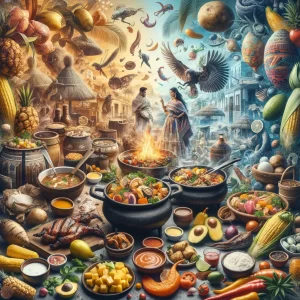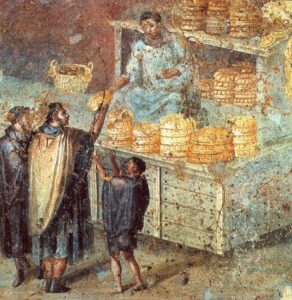Communal meals have historically served as a fundamental aspect of cultural identity, facilitating connections and nurturing social ties across various societies.
From the bustling streets of Asia to the vibrant gatherings in Africa and the rich traditions of Native American cultures, these shared dining experiences are essential for building community, exchanging knowledge, and reinforcing interpersonal bonds.
This article examines the significance of communal meals within diverse cultures, their role in religious practices, and the effects of modernization on these treasured traditions.
We invite readers to explore the profound impact that communal meals have on individual lives and community cohesion.
The Significance of Communal Meals in Different Cultures
.jpg_00.jpeg)
Communal meals play a crucial role in the cultural fabric of various societies, serving not only to nourish individuals but also to foster social connections, emphasize cultural significance, and reinforce traditions.
These gatherings, typically centered around the sharing of food, reflect the unique culinary heritage, cultural norms, and rituals specific to each community, underscoring the importance of family gatherings in promoting interpersonal relationships and social bonding.
Participation in these communal meals allows individuals to engage in storytelling, appreciate cultural narratives, and deepen their appreciation of cultural identity, thereby fostering a sense of belonging and solidarity that transcends generations.
Additionally, these practices contribute to the preservation of heritage within the context of evolving societal norms.
1. Communal Meals as a Means of Building Community
Communal meals serve a critical function in fostering community by promoting social cohesion and encouraging active participation among individuals through shared experiences and celebrations. These gatherings cultivate a sense of inclusivity, enabling participants to interact with one another and strengthen relationships within their community, ultimately contributing to enhanced social responsibility and mutual support.
For example, potlucks held during neighborhood festivals or community cookouts offer residents a platform to showcase their culinary traditions, thereby facilitating cultural exchange and understanding. Events such as harvest dinners not only celebrate local produce but also bring individuals together, providing neighbors with an opportunity to connect over food.
These communal dining experiences not only honor diversity but also reinforce trust and collaboration—essential components for community development. The act of sharing meals stimulates dialogue, allowing participants to discuss local issues and collaboratively develop solutions, thereby fostering a sense of ownership and belonging within their shared environment.
2. Communal Meals as a Form of Social Bonding and Cultural Exchange
Communal meals function as a significant mechanism for social bonding, enhancing friendships and emotional connections through shared culinary experiences that embody togetherness and hospitality. These meals establish an environment where individuals can fortify their relationships, fostering a sense of solidarity and belonging within the group.
When families convene around a dinner table during holidays, or community members assemble for potlucks, the act of sharing food extends beyond mere sustenance. It evolves into a ritual that deepens connections, as each dish often carries personal narratives or cultural significance.
For example, a grandmother’s secret recipe may evoke treasured memories, drawing younger generations closer while simultaneously honoring established traditions. The laughter, conversations, and collective anticipation for the meal reinforce interpersonal bonds and create a rich tapestry of shared experiences, illustrating how food can serve as an emotional catalyst that promotes unity and enhances relationships among participants.
3. Communal Meals as a Way to Share Knowledge and Traditions
Communal meals serve as a crucial medium for the exchange of knowledge and the preservation of culinary traditions, facilitating the transfer of generational wisdom through the sharing of recipes and narratives.
This process of cultural transmission fosters an appreciation for heritage and encourages participants to engage in storytelling, thereby enriching the collective memory of the community.
These gatherings not only allow individuals to enjoy delectable dishes but also provide a platform for the exchange of techniques and family secrets that have been transmitted through generations.
As meals are prepared, elders often take the lead, sharing the origins of the recipes and the stories associated with them, thereby transforming a simple meal into a valuable educational experience.
Through laughter and shared anecdotes, community members establish connections over their commonalities while also celebrating their unique backgrounds. This interaction reinforces community values and solidarity through the shared experience of dining together.
Communal Meals in Different Societies
Communal meals are expressed in unique ways across different societies, reflecting the distinct cultural identities, ethnic diversity, and local cuisines that characterize each community.
These meals serve as significant rituals that celebrate shared histories, traditions, and values, highlighting the essential role of food in commemorating special occasions and strengthening connections among individuals.
1. Asian Cultures
In Asian cultures, communal meals are integral to social practices, fostering food sharing during vibrant festivals and gatherings that showcase the culinary diversity of this expansive region. These meals typically consist of elaborate dishes that are shared among family and friends, thereby reinforcing social bonds and cultural identity.
The Lunar New Year celebrations in China, characterized by hearty dumplings and sticky rice cakes, and the Indian festival of Diwali, where families come together to enjoy an array of sweets and savory dishes, exemplify how the act of sharing food during these occasions cultivates a sense of unity and belonging, emphasizing the communal spirit and culinary traditions.
In Japan, communal dining experiences, such as hot pot dinners, not only facilitate dynamic culinary interactions but also serve as a means of connecting generations.
These practices highlight the cultural significance of meals, transcending mere sustenance; they represent a celebration of heritage and togetherness. Through these shared culinary experiences, participants strengthen their relationships while honoring their diverse traditions.
2. European Cultures
.jpg_01.jpeg)
European cultures exemplify the significance of communal dining through a wealth of local traditions centered around family gatherings, feasting, and culinary exchange. These meals underscore the importance of hospitality, fostering participation and cultivating a sense of community among individuals.
In numerous regions, communal dining acts as a cornerstone of societal values, illustrating the essential role that food plays in uniting people. For instance, in Italy, Sunday dinners are a revered tradition where multi-generational families gather to share homemade dishes, thereby creating lasting memories.
Similarly, in Spain, the tradition of tapas encourages friends and family to sample a variety of small plates, promoting engaging discussions and cultural exchange.
As these gatherings take place, they not only showcase diverse culinary practices but also strengthen relationships among participants, thereby enriching the social fabric of various communities throughout Europe.
3. African Cultures
In African cultures, communal meals are recognized as a fundamental aspect of food customs, serving as a means to reinforce togetherness and strengthen community bonds through shared rituals and traditions. These gatherings often feature vibrant interactions that reflect the continent’s rich culinary heritage and diverse practices.
Such events extend beyond mere physical nourishment; they represent an essential platform for expressing cultural identity and fostering social cohesion. From the intricate ceremonies that accompany the preparation of traditional dishes to the narratives exchanged around the table, these meals symbolize more than sustenance—they embody the collective values and historical narratives of each community.
The wide array of food traditions found across various regions underscores the continent’s diversity, where each dish conveys a story rooted in local customs and available ingredients. By engaging in these shared experiences, individuals enhance their connections with one another, reinforcing the essence of community while simultaneously celebrating their unique heritage.
4. Native American Cultures
Native American cultures regard communal meals as a fundamental aspect of their cultural heritage, wherein culinary practices are intricately linked with storytelling and traditional rituals that honor the land and ancestral connections.
These meals cultivate a sense of belonging and reverence for nature, seamlessly integrating the past and present through shared experiences.
The preparation and sharing of traditional dishes not only provide nourishment but also serve to preserve the narratives of the community, thereby reinforcing social bonds and cultural identity. Each meal represents a living narrative, with recipes transmitted across generations, reflecting the distinctive relationships between food, family, and land.
Gathering around the table facilitates meaningful discussions and mealtime conversations, allowing elders to impart wisdom and teachings, thereby ensuring that younger generations grasp the significance of their heritage and cultural continuity.
In this manner, communal meals function as essential venues for the transmission of cultural values, highlighting the importance of community gatherings, food sharing, and the symbolism inherent in each meticulously prepared dish. These shared experiences foster social bonding and reinforce cultural identity.
The Role of Communal Meals in Religious Practices
Communal meals hold substantial importance in numerous religious practices, functioning as both social rituals and expressions of cultural identity while emphasizing the significance of food symbolism and culinary traditions within spiritual communities.
These meals cultivate a sense of togetherness among participants, reinforcing shared beliefs and values through the collective act of dining, thus promoting social cohesion and cultural continuity across generations.
1. Christianity
In Christianity, communal meals are exemplified through the Eucharist, a sacramental meal that embodies fellowship and serves as a remembrance of the sacrifice made by Jesus Christ. These rituals foster strong bonds among participants, thereby reinforcing the sense of community and shared faith.
Along with the Eucharist, various fellowship meals function as essential expressions of unity within the church. These gatherings often take the form of potlucks, charity dinners, or special celebrations that bring individuals together, enabling them to share not only food but also their personal stories, joys, and struggles.
Participation in such communal experiences cultivates an atmosphere of belonging, inviting members to deepen their spiritual connections with one another and with God. The act of breaking bread together reflects early Christian practices and underscores the significance of hospitality, communal eating, and nurturing faith-based relationships among congregants.
2. Judaism
In Judaism, communal meals hold significant importance during celebrations such as Passover and Shabbat, where families come together to share traditional dishes that reflect cultural customs and values. These meals serve to strengthen familial bonds and reinforce cultural identity within the community.
During these important occasions, participants engage in various food rituals. For instance, the Seder plate during Passover features symbolic items such as bitter herbs and charoset, which highlight the community’s historical journey and cultural narrative. Similarly, on Shabbat, the lighting of candles and the blessing over challah bread create a sacred atmosphere conducive to reflection and gratitude.
These shared experiences not only nourish the body but also foster a deep sense of belonging, enabling individuals to connect with their heritage while celebrating enduring customs and family traditions that have been passed down through generations.
3. Islam
.jpg_10.jpeg)
In Islam, communal meals hold significant importance during Ramadan, particularly at Iftar, when families and communities convene to break their fast together. These gatherings embody the principles of hospitality and generosity, reinforcing social bonds and fostering a sense of community.
The ritual of sharing Iftar transcends the mere act of eating; it symbolizes unity and collective spirituality as individuals come together to express gratitude and share blessings following a day of fasting. Each gathering reflects the cultural diversity of various communities, showcasing traditional dishes and regional cuisines that promote inclusivity irrespective of one’s background.
As friends and neighbors gather at the table, they break bread together and create enduring memories, cultivating a spirit of belonging.
The emphasis on sharing during these occasions highlights the Islamic value of charity, as many individuals extend their hospitality and engage in communal cooking to those who are less fortunate. This practice not only strengthens communal ties but also enriches the overall spiritual experience of Ramadan.
4. Hinduism
In Hinduism, communal meals are frequently associated with festivals and rituals, during which prasad (offerings) are shared among participants to symbolize blessings and cultural heritage. These meals serve to enhance social interactions and reinforce the sense of community within Hindu traditions.
During significant festivals such as Diwali and Navratri, the act of gathering for a communal feast transcends the mere act of dining; it transforms into a sacred ritual that connects individuals to their cultural roots. Family and friends come together, sharing not only food but also stories and experiences that reinforce familial bonds and cultural continuity.
The significance of prasad is further deepened as it is regarded as a divine blessing from deities, fostering a spirit of generosity, gratitude, and cultural storytelling.
Such gatherings reflect the rich tapestry of Hindu culture, underscoring the essential role of food in promoting unity, understanding, and shared spirituality among diverse groups.
The Impact of Modernization on Communal Meals
The impact of modernization on communal meals has resulted in significant shifts in social structures and food customs, often challenging traditional practices and culinary heritage while concurrently fostering new forms of engagement and interaction.
As societies progress, the significance and execution of communal meals continue to evolve, encouraging discussions surrounding food sustainability and the importance of preserving culinary heritage and local food systems.
1. Decline in Communal Meals in Western Societies
In several Western societies, there has been a significant decline in communal meals attributed to social isolation and changing lifestyles. This trend has led to a detachment from traditional food customs and cultural practices that historically served to unite communities. Such a shift underscores the necessity of re-evaluating the significance of communal dining as a means of fostering interpersonal connections and strengthening community identity.
As individuals increasingly prioritize fast-paced lifestyles, the ritual of sharing a meal together has diminished. It is often supplanted by solitary dining experiences or meals consumed in front of screens. This alteration not only impacts interpersonal relationships but also disrupts the foundational elements of community culture, thereby affecting mental well-being and social interactions.
To address this trend, it may be beneficial to explore initiatives designed to revitalize communal dining environments. Examples could include organizing community potlucks or themed meal nights that encourage participation and collaboration among residents.
Furthermore, integrating food customs from various cultures could enhance these gatherings, fostering a renewed sense of belonging and unity among participants.
2. Revival of Communal Meals in Urban Communities
Despite the decline observed in certain areas, there is a notable revival of communal meals within urban communities, where individuals actively seek cultural exchange and engagement through shared culinary experiences. This resurgence underscores the enduring importance of communal dining and culinary diversity as a platform for building connections and fostering inclusivity and social equity.
These gatherings not only provide nourishment and sustenance but also serve as vibrant spaces for individuals from diverse backgrounds to come together, share stories, and learn from one another, promoting cultural exchange and intergenerational exchange.
Various initiatives, such as potluck dinners and community food festivals, highlight the significance of local traditions while promoting culinary creativity. By integrating cuisine from different cultures, urban residents enrich their social fabric, demonstrating that food can effectively break down barriers.
Such events facilitate social bonding, fostering a sense of belonging and unity that ultimately contributes to a richer tapestry of community life and cultural appreciation.
Frequently Asked Questions
What is the cultural significance of communal meals?
.jpg_11.jpeg)
Communal meals have long been an important aspect of various cultures around the world, reflecting cultural norms and culinary practices. They serve as a means of bringing people together, fostering social bonding, and strengthening social bonds.
Why are communal meals important in different societies?
In many cultures, communal meals serve as a way to share food and resources, promote cooperation, and maintain traditions. These meals also play a role in identity formation, cultural preservation, and reinforcing community dynamics.
How do communal meals differ across different societies?
The specific customs and rituals surrounding communal meals vary greatly from one society to another, reflecting distinct cultural expressions. Some may include prayers or specific seating arrangements, while others may have strict rules about who can participate in the meal.
What are some examples of communal meals in different cultures?
In Japan, the traditional tea ceremony is a communal meal that promotes mindfulness and social harmony. In India, the practice of eating together from a shared plate, known as thali, symbolizes unity and equality among all members of the community.
Do communal meals have any health benefits?
Research has shown that eating together as a family or community can have positive effects on mental and emotional well-being. It can also lead to healthier eating habits and reduce the risk of obesity.
How have modernization and globalization impacted communal meals?
In some societies, traditional communal meals and communal rituals are being replaced by individualized, fast-paced eating habits. However, efforts are being made to preserve and promote the cultural importance of communal meals and food traditions in the face of these changes.

My name is Bruno, I have been a writer for 5 years and I work with website creation. My goal is to provide true information to readers. In fact, on this site I write about cultures and traditions, which I have been passionate about since childhood.




